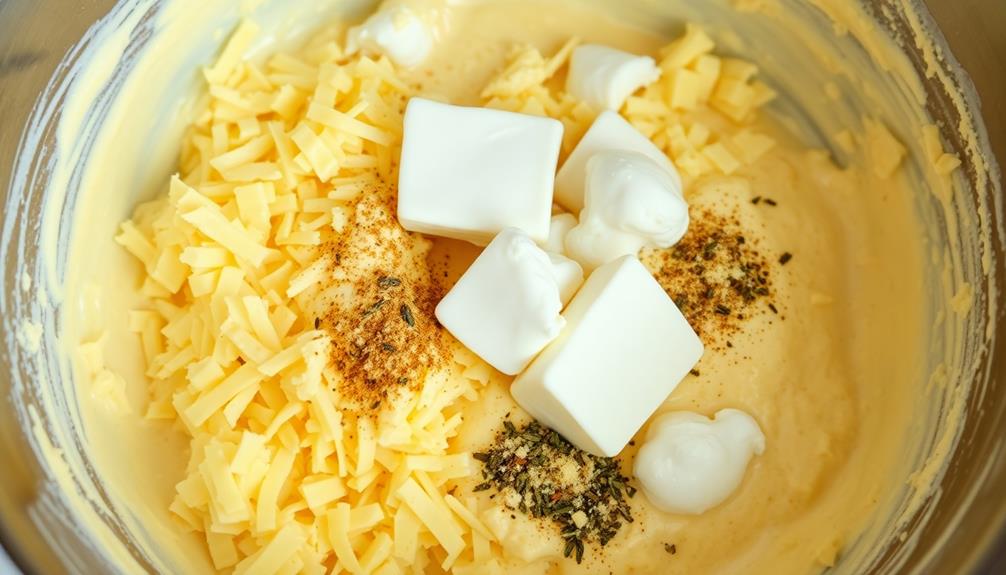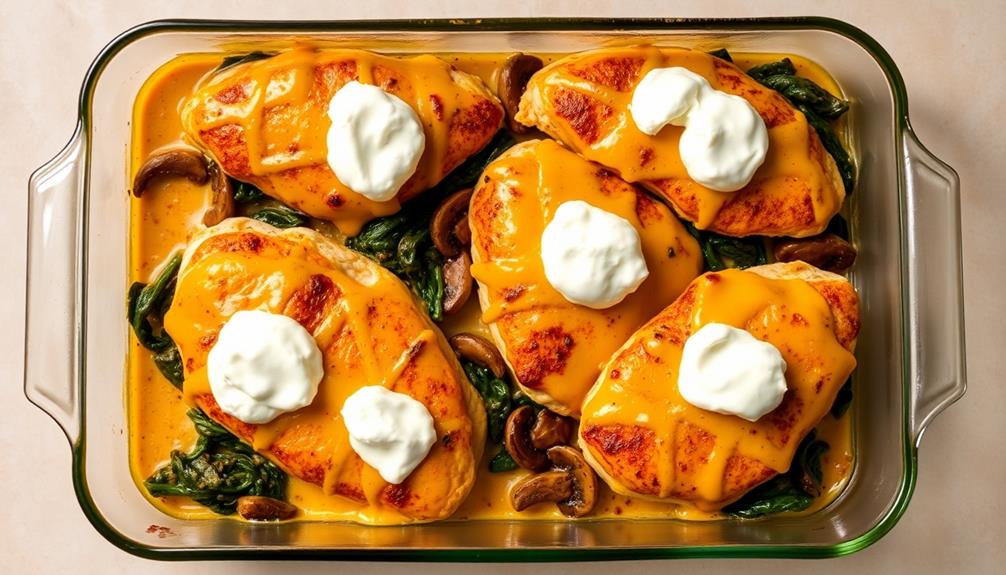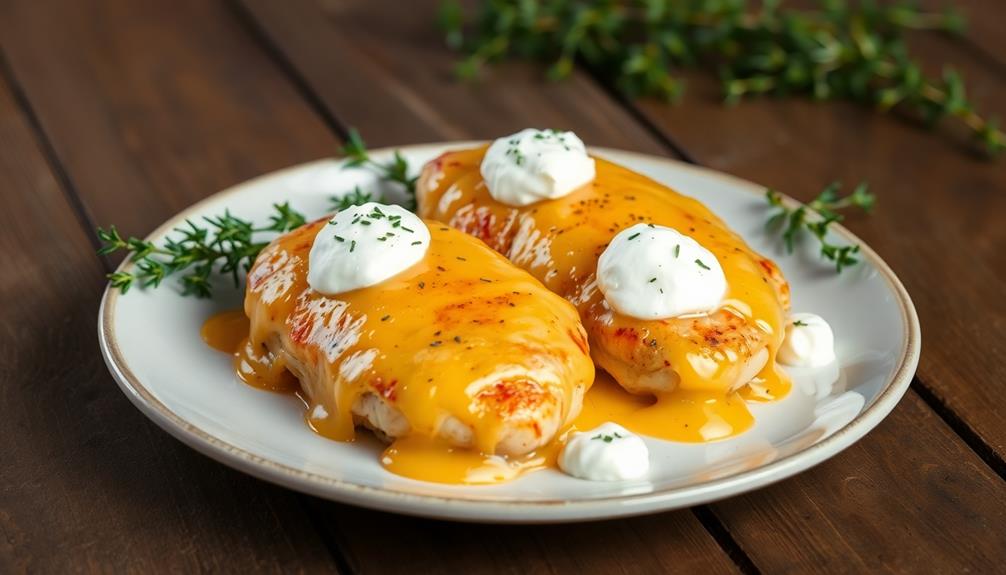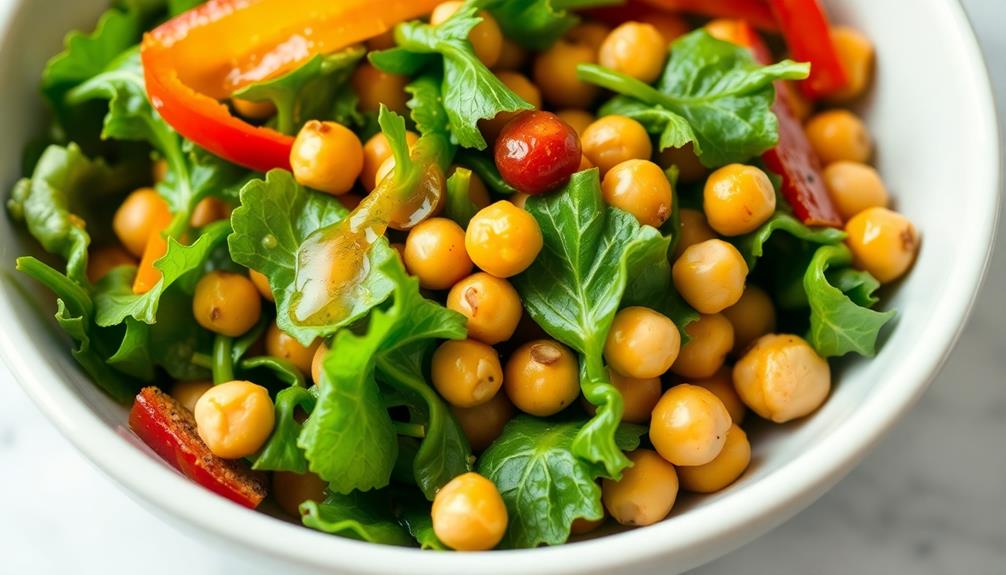As an athlete, you may be intrigued by the ketogenic diet's potential to fuel your performance through fat-burning. This low-carb approach dates back to the 1920s, originally developed to treat epilepsy. But today, athletes are exploring keto for its ability to enhance endurance and body composition. To get started, focus on nutrient-dense foods like healthy fats, proteins, and low-carb veggies. Follow simple cooking steps to create delicious keto-friendly meals. With the right guidance, you can personalize your keto plan to support your athletic goals. Continue reading to discover more about how keto can give you a competitive edge. Switching to a ketogenic diet for athlete performance involves a strategic approach to macronutrient ratios, meal timing, and supplementation. It’s important to consult with a nutritionist or dietitian who understands the specific demands of your sport and training regimen. They can help you fine-tune your carbohydrate intake to optimize energy levels and recovery while on a keto diet. With the right support, the ketogenic diet has the potential to revolutionize your athletic performance and help you reach new levels of success.
Key Takeaways
- The ketogenic diet, originally developed in the 1920s to treat epilepsy, is now being explored by athletes for potential performance enhancement through fat-burning.
- Nutrient-dense foods, including healthy fats, proteins, and low-carb vegetables, are crucial for meeting the energy and nutritional needs of athletes on a ketogenic diet.
- Properly timed and portioned keto-friendly meals can provide sustained energy and support body composition goals, potentially improving endurance and mental focus during athletic performance.
- Flexibility and personalization in the ketogenic diet, through customized serving sizes and flavor variations, can enhance the enjoyment and adherence to the dietary approach.
- Collaboration with qualified professionals, such as nutritionists and coaches, is essential for designing a personalized ketogenic diet plan that safely and effectively supports an athlete's health and performance priorities.
History
The ketogenic diet has been around for nearly a century, initially developed in the 1920s as a treatment for epilepsy. Back then, it was discovered that fasting could dramatically reduce seizures in children. Researchers then realized that mimicking the fasting state through a high-fat, low-carb diet could provide the same benefits without the need to completely stop eating.
Over the decades, the keto diet has been studied extensively for its effects on various health conditions, from weight loss to type 2 diabetes.
In more recent years, athletes have also taken an interest in using keto to fuel their performance. By putting the body into a state of ketosis, where it burns fat for fuel instead of carbs, some athletes believe they can improve endurance, mental focus, and overall energy levels.
As the research on keto for sports continues to evolve, more and more athletes are experimenting with this high-fat, low-carb approach to see if it can give them a competitive edge. Some athletes have reported increased endurance and faster recovery times when following a ketogenic diet, while others have experienced a decrease in performance initially. However, with the help of nutritionists and sports scientists, many athletes are finding ways to optimize ketofriendly diets for athletes, ensuring they are still getting the necessary nutrients and energy to fuel their training and competition. This ongoing experimentation and fine-tuning of keto diets for sports performance will likely continue to shape the way athletes approach their nutrition in the future.
Recipe
Keto diets have become increasingly popular among athletes looking to optimize their performance and body composition. While the ketogenic approach may offer some benefits, it's crucial to ensure that your nutrient needs are met, particularly when engaging in intense physical activity.
Living in abundance requires a focus on nutrient-dense foods that support your energy levels. This recipe for a keto-friendly dish showcases how you can enjoy delicious and nourishing meals that support your athletic goals.
The combination of healthy fats, protein, and low-carb vegetables in this dish provides a well-balanced and satisfying option for athletes following a ketogenic lifestyle. By focusing on nutrient-dense ingredients, you can fuel your body with the essential macronutrients and micronutrients it requires to thrive during training and competition.
Ingredients:
- 4 boneless, skinless chicken breasts
- 2 tablespoons olive oil
- 1 cup sliced mushrooms
- 1 cup chopped spinach
- 1/2 cup grated cheddar cheese
- 2 tablespoons cream cheese
- 1 teaspoon garlic powder
- 1 teaspoon dried thyme
- Salt and black pepper to taste
Instructions:
Preheat your oven to 375°F (190°C). In a large skillet, heat the olive oil over medium-high heat. Add the chicken breasts and sear them for 3-4 minutes per side until they develop a golden-brown crust. Transfer the seared chicken to a baking dish.
In the same skillet, sauté the mushrooms until they release their juices and begin to brown, about 5 minutes. Add the spinach and sauté until it wilts, approximately 2-3 minutes. Spread the mushroom-spinach mixture over the chicken breasts, then top with the grated cheddar cheese and dollops of cream cheese.
Season with garlic powder, dried thyme, salt, and black pepper. Bake the dish in the preheated oven for 25-30 minutes, or until the chicken is cooked through and the cheese is melted and bubbly.
Cooking Steps
First, gather your ingredients and equipment, including healthy fats like coconut oil to enhance flavor and support energy levels.
Then, mix the wet and dry ingredients until well combined.
Step 1. Gather Ingredients and Equipment

Before you can begin cooking, you'll need to gather the necessary ingredients and equipment. For the keto-friendly recipes in this article, you'll want to have things like grass-fed butter or coconut oil, full-fat dairy products, nuts and seeds, leafy greens, and healthy protein sources like wild-caught fish or pasture-raised poultry.
Incorporating options such as low carb high protein breakfast ideas can help ensure you meet your nutritional goals. Don't forget low-carb veggies, avocados, and spices to add flavor.
As for equipment, you'll need basic kitchen tools like measuring cups and spoons, cutting boards, sharp knives, and a good quality skillet or saucepan. An oven, blender, or food processor can also come in handy for various keto recipes.
Make sure you have airtight storage containers too, as meal prepping is key for sticking to a low-carb lifestyle. Take a few minutes to ensure you have everything you need before starting to cook. This will help the process go smoothly and ensure your keto-friendly meals turn out perfectly.
Step 2. Mix Wet and Dry Ingredients

Typically, you'll begin by mixing the wet and dry ingredients for your keto-friendly recipe. In a large bowl, combine the dry ingredients like almond flour, coconut flour, and any spices or sweeteners you're using.
In a separate bowl, whisk together the wet ingredients, which might include eggs, melted butter or coconut oil, and any liquids like water or nut milk.
Once you have both the wet and dry mixtures ready, slowly pour the wet ingredients into the bowl with the dry ingredients. Use a spatula or wooden spoon to gently fold the two together until they're fully incorporated and you have a smooth, consistent batter.
Be careful not to overmix, as that can result in a dense or tough final product.
Depending on the recipe, you may need to let the batter rest for a few minutes before proceeding to the next step. This allows the flours to fully absorb the wet ingredients and helps create the perfect texture.
Step 3. Bake at 375°F for 30 Minutes

Once the batter is ready, preheat your oven to 375°F. You'll want to let it fully heat up before popping in your keto-friendly treats.
Grab a baking sheet and line it with parchment paper or a silicone baking mat. This will help prevent sticking and make cleanup a breeze.
Carefully pour the batter onto the prepared sheet, spreading it out evenly. Be sure not to overfill, as the keto dough can rise quite a bit during baking.
Slide the sheet into the hot oven and set a timer for 30 minutes. Keep an eye on it, as oven temperatures can vary. The cookies or bars should be golden brown on top and firm to the touch when ready.
Use oven mitts to remove the hot pan, then let the keto goodies cool completely before enjoying.
With just a few simple steps, you'll have a batch of delicious low-carb fuel to power your athletic performance.
Step 4. Allow to Cool Before Serving

After removing the keto treats from the oven, let them cool completely on the baking sheet. This is a crucial step that shouldn't be rushed.
As the baked goods cool, the structure will set, and the flavors will meld together. If you try to dig in too soon, you'll end up with a gooey, messy disaster. Be patient and let those keto-friendly cookies, muffins, or fat bombs cool for at least 15 minutes.
You'll know they're ready when they've firmed up and you can easily transfer them to a serving plate. Cooling also allows any excess moisture to evaporate, preventing a soggy texture.
Once cooled, your keto treats will have the perfect texture – soft, yet sturdy enough to hold their shape. Now you can proudly display your freshly baked creations and enjoy every delicious, low-carb bite.
Step 5. Serve With Desired Toppings

With the keto treats cooled, you can now serve them with any desired toppings. This is where you can really make them your own! Crushed nuts, shredded coconut, a drizzle of melted dark chocolate – the options are endless.
If you're craving a bit of sweetness, a dollop of homemade whipped cream or a sprinkle of powdered erythritol would be delicious. For a tangy twist, try a swirl of full-fat Greek yogurt or a squeeze of fresh lemon juice.
Get creative and have fun experimenting! The great thing about keto baking is you can personalize each serving to your taste preferences.
Just keep in mind that any additional toppings will affect the overall nutrition, so be mindful of portion sizes. Enjoy your freshly baked keto treats with your favorite flavors on top. They're the perfect low-carb indulgence to fuel your athletic pursuits.
Final Thoughts
Oftentimes, the decision to adopt a ketogenic diet as an athlete can be a complex one. There's a lot to consider, from the potential impacts on your performance to the challenges of sticking to a low-carb lifestyle.
But if you're willing to put in the work, following a well-planned keto diet can be an incredibly effective way to fuel your athletic endeavors.
The key is to approach it thoughtfully, doing your research and working closely with a qualified nutritionist or coach. They can help you design a keto plan that meets your unique needs and find ways to overcome any obstacles you might face.
And don't be afraid to experiment – what works for one athlete may not work for another. Stay flexible, listen to your body, and make adjustments as needed.
At the end of the day, your health and performance should be the top priorities. If keto can help you achieve your goals, it's definitely worth considering.
Just be sure to approach it safely and sustainably.
Frequently Asked Questions
How Does a Keto Diet Affect My Athletic Performance?
A keto diet can impact your athletic performance. You may notice decreased endurance and intensity, but with time, your body can adapt to using fat as its primary fuel source, potentially improving your performance.
What Are the Potential Benefits of a Keto Diet for Athletes?
A keto diet can provide athletes with increased fat-burning capacity, better endurance, and enhanced mental focus. However, it may also require adjusting training and recovery strategies to optimize performance on low carbs.
How Can I Transition to a Keto Diet While Training?
When transitioning to a keto diet while training, gradually reduce your carb intake, increase your healthy fat intake, and listen to your body's signals to find the right balance for your performance needs.
What Types of Exercises Work Best on a Keto Diet?
On a keto diet, you'll find that low-to-moderate intensity exercises like walking, cycling, and strength training work best. High-intensity workouts may be more challenging, so you'll need to experiment to find the right balance for your body.
How Do I Adjust My Macros for Endurance or Strength Training?
To adjust your macros for endurance or strength training on a keto diet, you'll need to increase your protein intake and potentially adjust your fat intake to support your fitness goals. Consult a professional to determine the optimal macro split.










